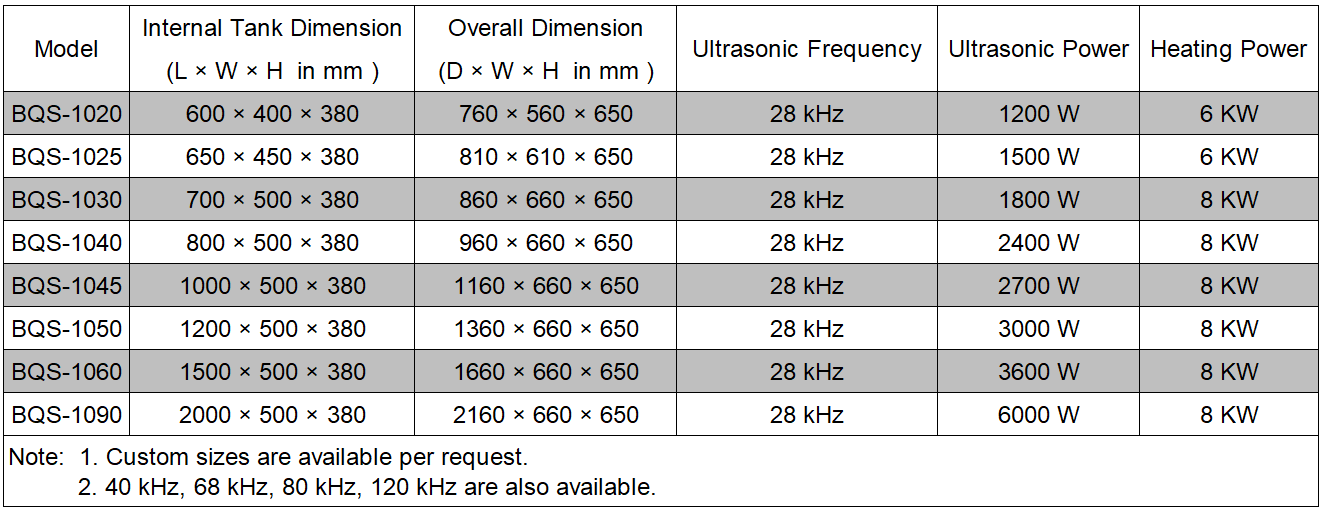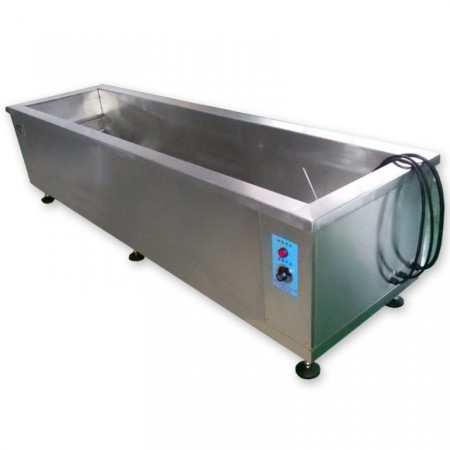Ultrasonic Cleaning Machine use of high-frequency sound waves to remove a variety of contaminants adhering to parts like metals, plastics, glass, rubber, and ceramics. Contaminants can include dust, dirt, oil, rust, grease, bake-on carbon, lime scale, polishing compounds and mold release agents, and so on. Industrial ultrasonic cleaners are used in the automotive, printing, marine, medical, pharmaceutical, electroplating, disk drive components, engineering and chemical fiber industries.
► WORKING PRINCIPLE
The built-in ultrasound generating transducers produce ultrasonic waves in the fluid by changing size in concert with an electrical signal oscillating at ultrasonic frequency. This creates compression waves in the liquid of the tank which ‘tear’ the liquid apart, leaving behind many millions of microscopic ‘voids’ or ‘partial vacuum bubbles’ (cavitation). These bubbles collapse with enormous energy; however, they are so small that they do no more than clean and remove surface dirt and contaminants adhering to parts like metals, plastics, glass, rubber, and ceramics. This action also penetrates blind holes, cracks, and recesses. The higher the frequency, the smaller the nodes between the cavitation points, which allows for cleaning of more intricate detail. The intention is to thoroughly remove all traces of contamination tightly adhering or embedded onto solid surfaces. Water or solvents can be used, depending on the type of contamination and the workpieces.
► ADVANTAGES
- All Stainless steel construction
- Simple operation and complete safety protection function
- Sweep Frequency generator provides effective cavitation with no standing waves
- Adjustable ultrasonic power(10%~100%), adjustable cleaning time
- To clean delicate parts without damage
- To clean small apertures, blind holes, and crevices
► TECHNICAL SPECIFICATIONS

► FEATURES
- Piezoelectric transducers are made up of several components. The ceramic crystal is sandwiched between two strips of tin. When voltage is applied across the strips it creates a displacement in the crystal, known as the piezoelectric effect. When these transducers are mounted on the walls or bottom of a tank, the displacement in the crystal causes a movement of the diaphragm, which in turn causes a pressure wave to be transmitted through the aqueous solution in the tank. Because the mass of the crystal is not well matched to the mass of the stainless steel diaphragm, an intermediate aluminum block is used to improve impedance matching for more efficient transmission of vibratory energy to the diaphragm.
- Ultrasonic generator converts a electrical frequency into the high frequencies required in ultrasonic transmission, generally in the range of 20 to 80 kHz. ultrasonic generator uses sweep frequency and auto-follow circuitry. Frequency sweep circuitry drives the transducers between a bandwidth slightly greater and slightly less than the center frequency. For example, a transducer designed to run at 28 kHz will be driven by a generator that sweeps between 27 and 29 kHz. This technology eliminates the standing waves and hot spots in the tank that are characteristic of older, fixed-frequency generators. Auto-follow circuitry is designed to maintain the center frequency when the ultrasonic tank is subjected to varying load conditions. When parts are placed in the tank or when the water level changes, the load on the generator changes. With auto-follow circuitry, the generator matches electrically with the mechanical load, providing optimum output at all times to the ultrasonic tank.
- Ultrasonic tanks are generally rectangular and can be manufactured in just about any size. Transducers are usually placed in the bottom or on the sides, or sometimes both when watt density is a concern.



